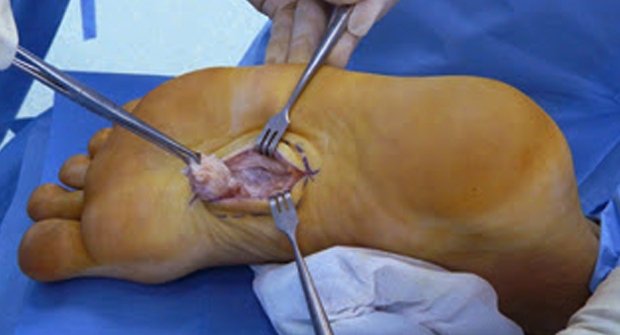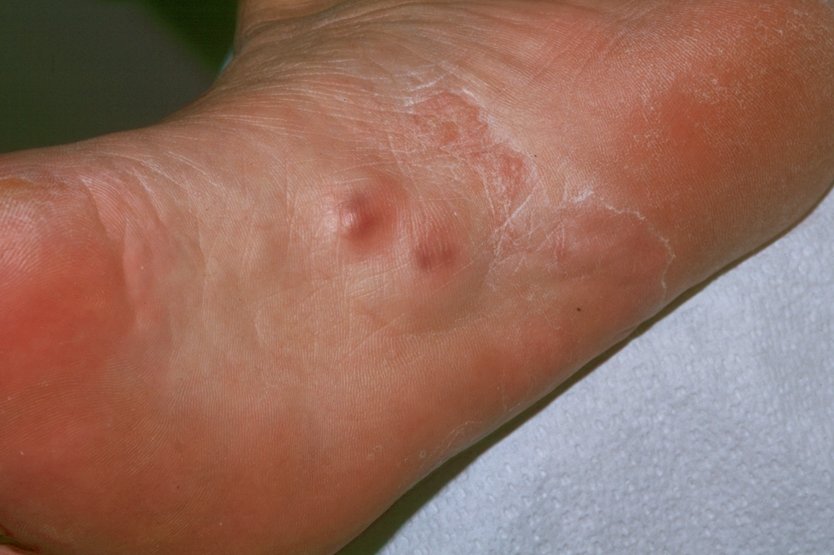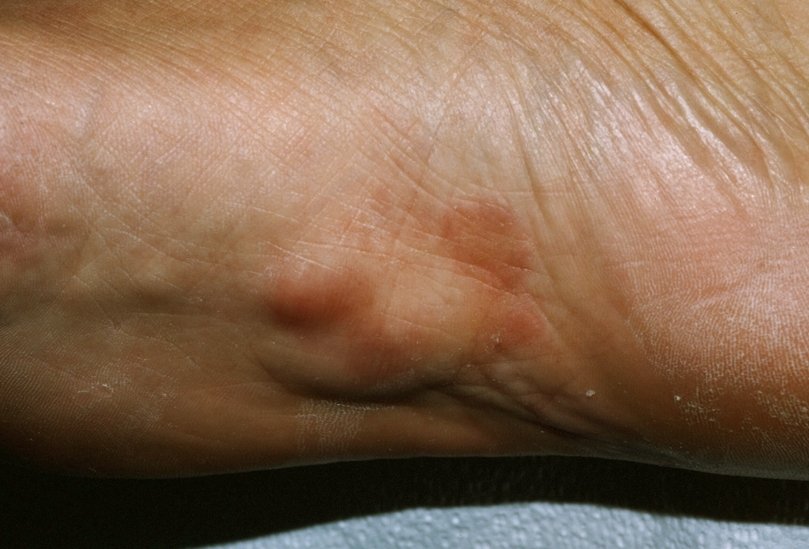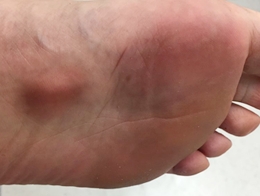Plantar Fibroma
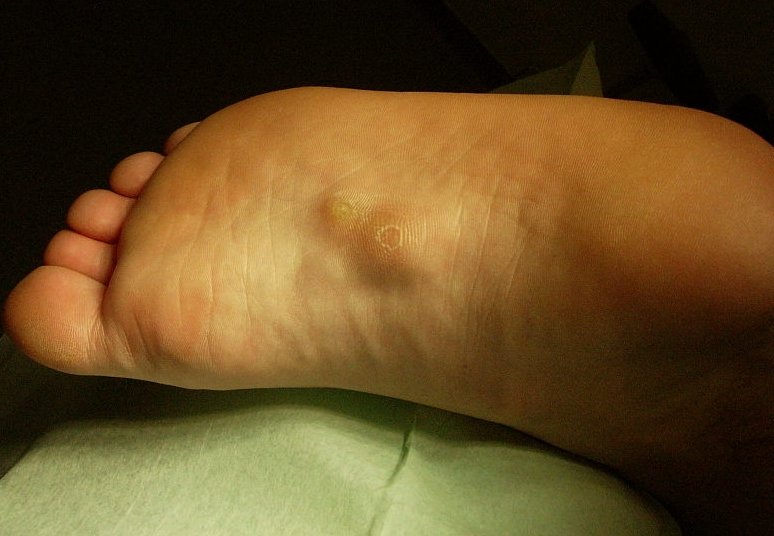
Have you recently noticed an unusual swelling on the inside of the soles of your feet? Is the swelling so thick that it is beginning to give you some concerns? What you have could be plantar fibroma (Plantar Fibromatosis). This condition hardly gives you any pain, but the fact that the swelling and the thickening are cosmetically challenging is enough to give you sleepless nights. However, we want to assure you that there is a solution to your condition.
Plantar fascial fibromatosis otherwise known as Ledderhose’s disease is quite uncommon, though is common in some families, and has a higher incidence among males, diabetic patients, cigarette smokers, alcoholics, and people with liver and thyroid problems.
What is Plantar Fibroma?
Plantar Fibroma is a non-malignant thickening of the deep connective tissues or fascia of the feet. The disease is a minor and an uncommon condition which begins with the development of nodules and cords along the tendons of the foot. But with time, there is a thickening of the cords, stiffening and bending of the toes, and pain while walking.
Plantar Fibroma (Ledderhose’s disease) is named after the German surgeon, Dr. Georg Ledderhose, who was the first to describe the condition in 1896. The nodules are quite slow in growing and are usually located in the media and central portions of the plantar fascia. The condition is usually benign (self-limiting), and the onset could differ with different patients. In some cases, the fibroma remains dormant for several months or years, and then suddenly begins to grow rapidly.
Symptoms of Plantar Fibroma
Plantar Fibroma comes with some recognizable signs and symptoms. These symptoms vary from person to person. While there is pain in some persons, it is completely painless in others. Here are a few symptoms you should familiarize yourself with.
- Lump in the medial portion of the sole
- Painless lump
- No contractures at the early stage
- Freely movable overlying skin
- 25% of patients are symptomatic on both feet (Bilateral growth)
Causes of Plantar Fibromatosis
Some causes of this problem have been identified, and they include the following:
- Trauma: Trauma is one of the causes for the formation of plantar fibroma. Though the mode of formation is not completely clear, it is suggested that injury to the plantar fascia leads to excessive formation of connective tissues as the injury tries to heal itself. The abnormal multiplication of the connective tissues gives rise to the condition.
- Some medications: Certain medications that are taken for other conditions increase the likelihood of plantar fibroma formation, especially if you have already been exposed to any form of injury to the plantar fascia. Some of those medications include anti-seizure drugs and beta-blockers.
- Improper footwear: Footwear with high heels and toe springs overstretch the plantar fascia thereby causing some weakness in the tissue. Plantar fibroma may result from loss of plantar fascia integrity, point pressure from high-heeled shoes, and imbalances in foot structure.
- Certain health conditions: Some health conditions are known to predispose one to plantar fibromatosis. Some of them include epilepsy, thyroid problems, liver disease, and diabetes. People with these health challenges are prone to developing plantar fibroma, though the exact pathophysiology is not well understood.
- Alcoholism: This has also been implicated as one of the causes or predisposing factors to plantar fibromatosis.
- Genetic factors: Just like some genetically-linked diseases like diabetes, hypertension, and asthma, this condition is common in some families.
- Other factors: Other factors like gender and age have also been suggested as possible causes of the condition.
How to treat Plantar Fibroma?
The treatment of plantar fibromatosis includes conservative and surgical management. Some of the conservative treatments (without the use of surgery) include:
- Change footwear: It is better to change your footwear to something that will distribute your body weight fairly across your joints and foot bones, thereby reducing the pressure on the plantar fascia. In order to have the weight well distributed, it is better to use shoes with a flat sole.
- Use a Toe spacer: This will help to spread the weight of the body across the joint and foot bones.
- Stretching exercises: This is quite helpful. But care must be taken in order not to overstretch the fascia, which may lead to a further damage and provocation or more inflammation and growth.
- Drug therapy: The use of anti-inflammatory medications such as Non-Steroidal Anti-Inflammatory drugs (NSAIDs) would go a long way in helping to reduce the pain and further inflammation of the affected area. Some of those NSAIDs include Ibuprofen, Diclofenac, Aspirin, and Piroxicam. But they must not be taken for a long period because of the possibility of developing peptic ulcer.
Surgical treatment
Surgery is usually the last resort when other conservative managements fail to resolve the problem. The surgery is a bit difficult as a result of the proximity of muscles, tendons, and nerves to one another. If it is well performed by an experienced podiatrist, surgery can help in taking care of this problem. However, in some cases, it is difficult to define the boundaries of the growing tissues, which usually leads to the surgeon leaving out a portion of the diseased tissue after undertaking the surgery. If there is inadequate excision, the likelihood of a recurrence becomes a bit higher.
Radiotherapy may be administered post-operatively in order to help prevent recurrence. This has worked in a number of cases. The administration of gadolinium as well as skin grafting has also produced positive results for sufferers.
Conclusion
You have understood that the condition you are suffering from is plantar fibroma. You also understand the symptoms of the condition. You need to know that taking no action and waiting for the pain and swelling to go away spontaneously may not help. It is time to take the bulls by the horns by following the conservative treatments we have outlined above. But whereby the conservative management fails, you should consult a podiatrist for a possible foot surgery to permanently take care of the problem. This would obviously give you a rest of mind and stop your pain.
Pictures
Take a look at some of the Pictures of plantar fibroma:
